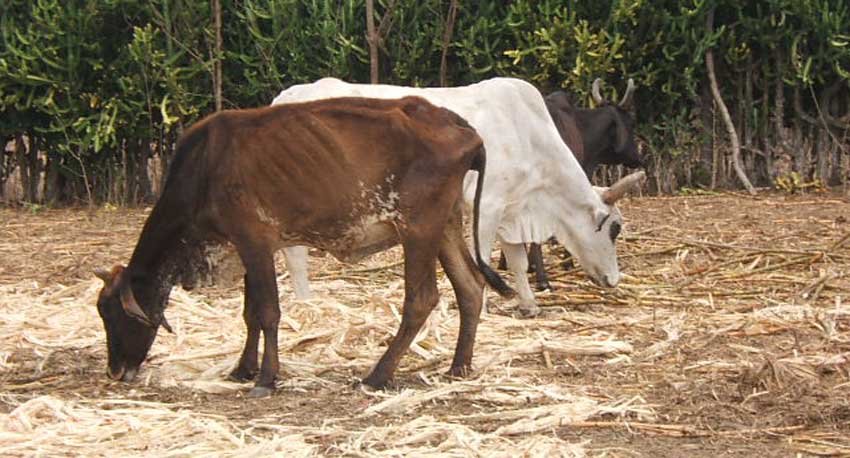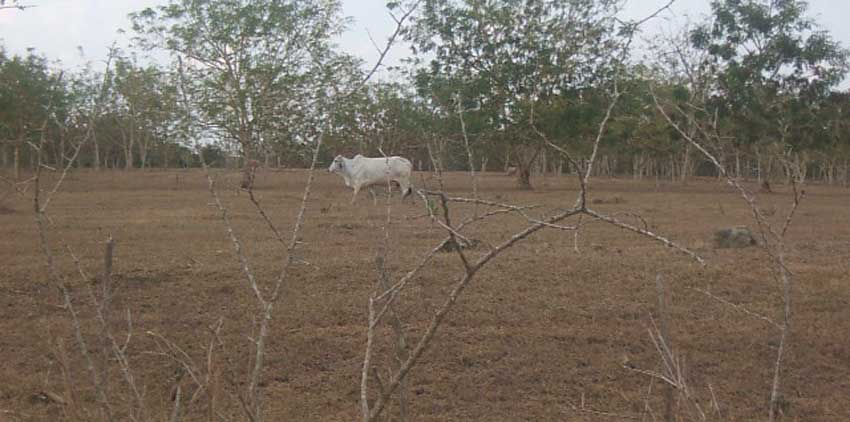
A tense situation with the cattle mass was experienced in the province of Las Tunas during the critical stage of the acute drought, which we already started to leave behind due to the arrival of the rainy season. And that should be a reason for analysis and debate; it can even be a lesson to avoid repeating the laments and the consequences.
Las Tunas, Cuba.- It is not for nothing. Livestock farming in the territory is called to increase its yields, because now more than ever, all food counts. It would be unreasonable for the owners of livestock, both private and state-owned, to let their herds die for not adopting the saving measures in time.
In addition, in the eight municipalities, the cattle mass amounts to 241,800 heads, and there are more than 2,600 buffaloes, according to Jorge Luis Lozada Hechavarria, sub-delegate of Livestock at the Delegation of the Ministry of Agriculture, who added recently that these animals are in the hands of about 15,000 owners.
Do all the owners guarantee food for those days when the sun cracks the stones and the grass on the ground is yellow? No. Do they have enough water to give each animal the 120 liters of water it needs daily? No.
This is the first problem: the lack of foresight for the driest months and on this aspect has been very much insisted by the main political and governmental authorities of the province, aware of the importance of these animals to guarantee milk and meat to children, the elderly, pregnant women and other population vulnerable due to health problems.
Until the end of May, the province accumulated 7,069 deaths, 2,593 more than in the same period last year, and a rate of 2.80 percent of 1.65. By municipality, Las Tunas (860) and Jobabo (642) are the worst performers in that period.
The main causes of death continue to be malnutrition, with 2,954, and accidents, with 922. For these two reasons alone, 54.8 percent of total losses occurred.
What has been done to reduce mortality? 355 fines were applied, almost 5,000 inspections were carried out on production bases and individual producers, and there were warnings for mismanagement of the masses, closures of units due to food deficiencies... Was this enough? No.
More than corrective measures or reprimands, the availability of water is urgent, whether it be by means of lagoons and reservoirs, extracted by windmills or transported in pipes. There is also a need for sown food, which can be conserved in fresh places for those days when there is no natural pasture; and the territory is already registering good experiences with king grass, sugar cane, “moringa”, mulatto, tithonia and other varieties.
The planting of animal feed was completed in May, with more than 473 hectares. But the municipalities of Majibacoa, "Colombia", "Amancio" and Las Tunas did not make it to their plans. During the period, the land preparation for planting grasses and forage was not achieved, as only 4,049 of the 5,077 hectares planned were in use.

These are recurring themes in the meetings of the extended council of the Delegation of Agriculture with the Provincial Party Bureau, because, although year after year the same facts are repeated, there are still insufficient actions to prevent the great deterioration that today suffers the mass of livestock and an example is in the delivery of meat to the industry, which is fulfilled in the weight of live animals and not in the yield of the deboned product.
Therefore, Lozada Hechavarria recognizes that we must increase the average weight of the specimens; that is, improve their physical conditions. For the mass to grow, it is necessary to deliver more meat with fewer heads, there are no options.
Fortunately, we're working on specializing producers and there are units dedicated to fattening bulls. These days, El Rubí farm is even starting up, for the fattening of buffaloes. There are 26 hectares of the Gustavo Fraga Basic Business Unit, in the municipality of Las Tunas.
In the place they foresee the recovery of an area infested with marabou and they will take advantage of the fact that there is abundant natural food in the area. They also cultivate a hybrid of the mulatto grass in the surrounding area, which favors daily weight gain.
As of May 30, six million 872,800 liters of milk had been collected, out of a plan of seven million 271,400 liters, for 95 percent. Two thousand 821 tons of the 2,785 tons planned were delivered to the meat industry, but there can be no compliance. This region has tradition, experience and needs to produce more. It simply needs the will to do things better.






